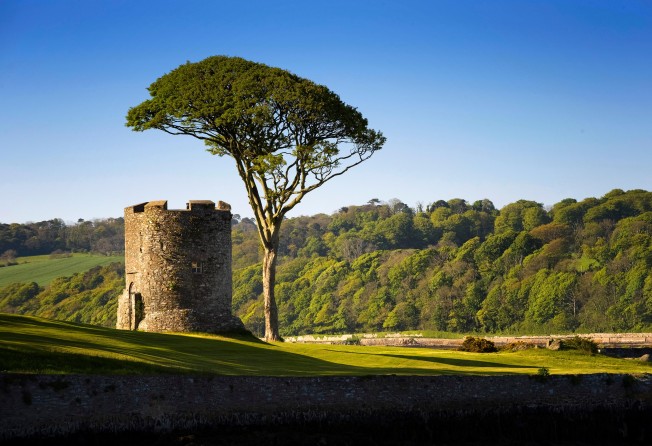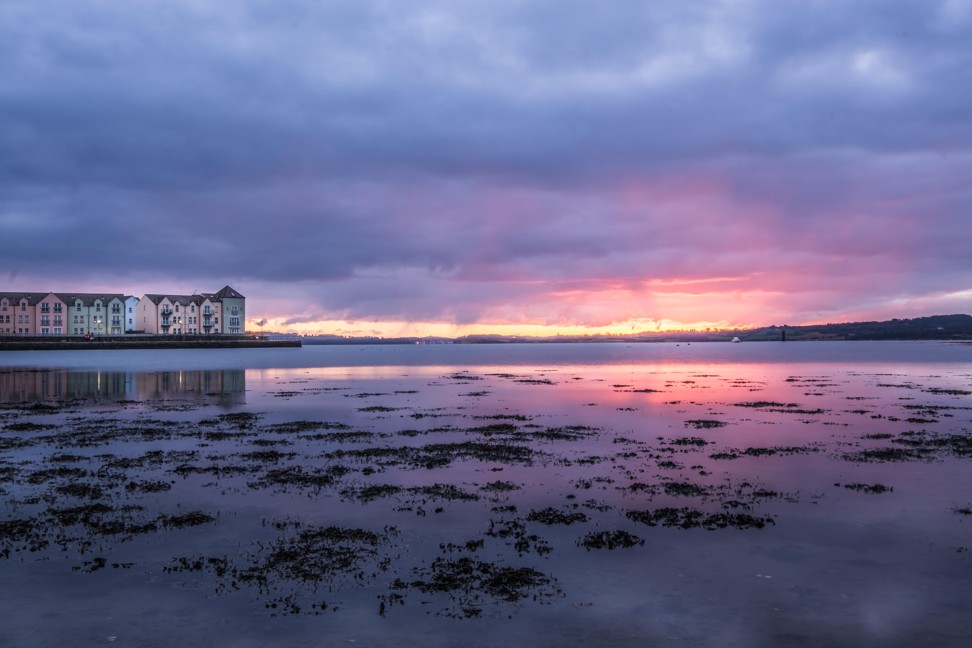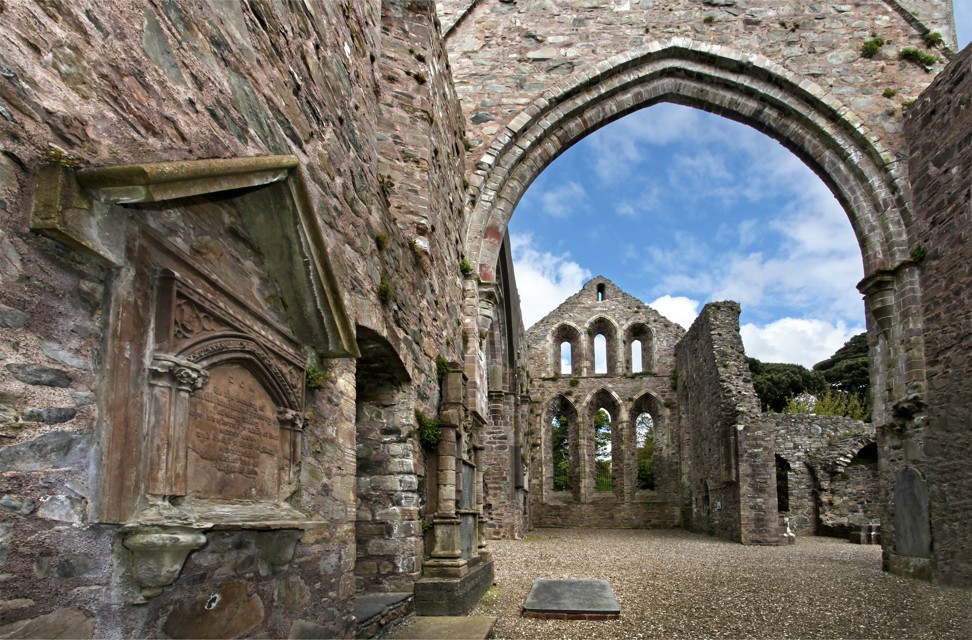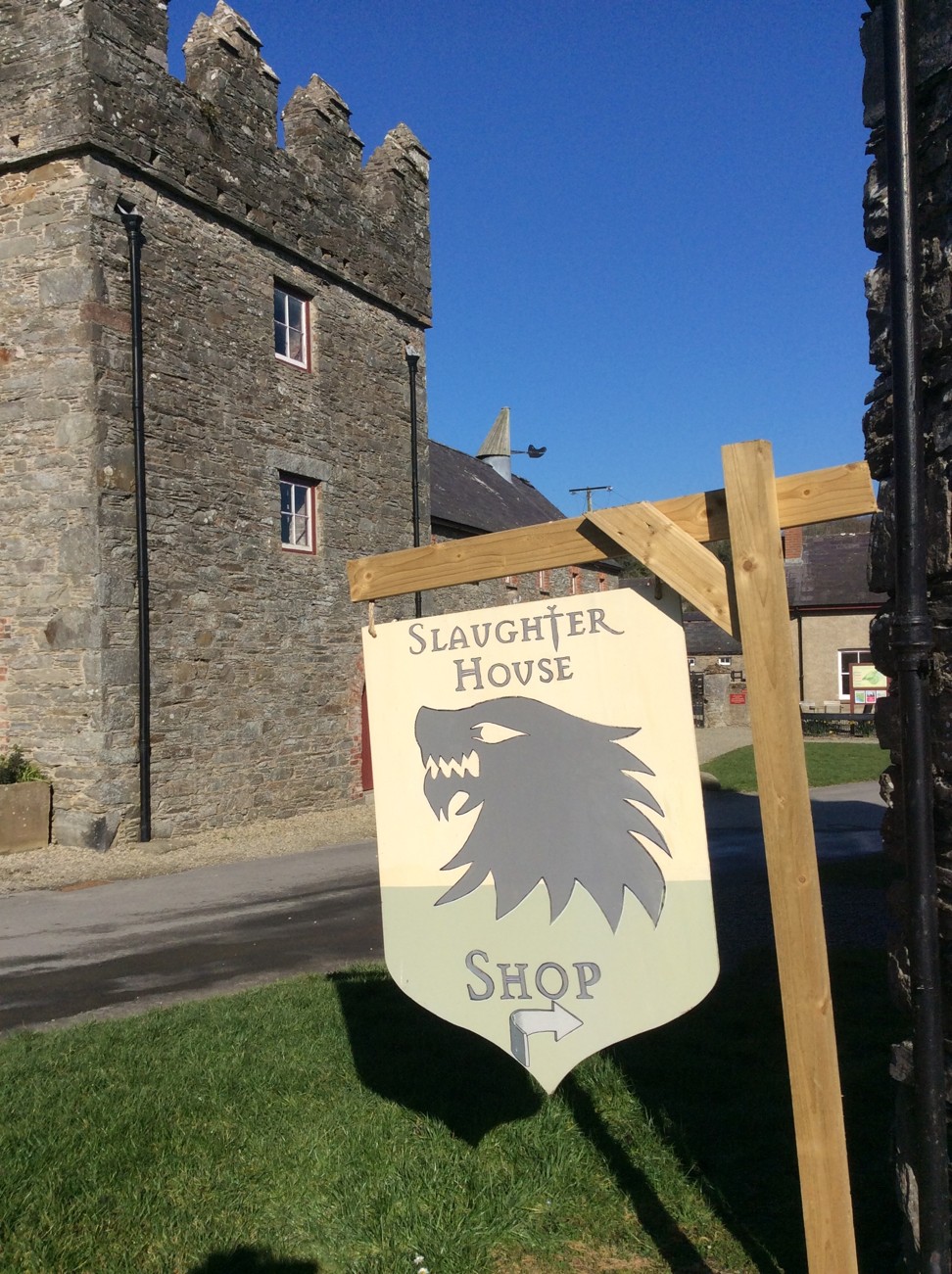Strangford, Northern Ireland: where Game of Thrones’ House of Stark rules, Winterfell stands and direwolves roam
- The picturesque coastal village has found fame as a filming location for the popular HBO fantasy show
- Tour groups follow the same predictable path, missing out on some of the loveliest aspects of the area

If you didn’t know any better, you might think that Strangford (population: about 500) is simply one of Northern Ireland’s most picturesque coastal villages. Its houses are pastel-painted, it has a tiny marina and a large ferry, and the Angelus bell rings piously, and punctually, at midday and six o’clock. It’s an ornithologist’s tweeting dream.
Even the Troubles (ethno-nationalist violence that racked Northern Ireland between the late 1960s and the late 90s) left it unscathed, the last major skirmish in the district being the Battle of Strangford Lough, in 877.
And yet it has an unlikely claim to fame: it’s where Game of Thrones, that compendium of sex and violence, began its journey to becoming one of the world’s most-watched television series.
Castle Ward, on Strangford’s outskirts, is the location for Winterfell, home of the Stark family. In the first series, Robert Baratheon, King of Westeros, comes for a visit. Two-thirds of the way through he dies, the plot moves into top gear and, a few seasons later, village newsagent Kevin Kearney is selling mugs that announce “Winter is Coming” and “Bend The Knee” doormats.
Initially, these were a puzzle. I spend several weeks a year in Strangford but, being a latecomer to GoT, assumed the weather prediction and other brooding T-shirt slogans (“The North Remembers”) were a reflection of local sentiment.
Kearney couldn’t enlighten me, never having seen the series. In this he’s not alone: almost everyone you ask in the village denies knowledge of the TV programme.
“They feel that if it’s made here, it’s not very good,” William Mulhall explains one recent morning, flicking back his considerable mane. He’s arranging Stark souvenirs (Hodor doorstop: £10/US$13) in a little square next to the bus-stop where the tour groups gather.

Mulhall’s father, also William and also hirsute, is sitting on a nearby wall and stroking a beard in which you could hide several nesting seabirds. His sleeve bears the words “Dothraki Slave Master”.
As I’ve now caught up with GoT’s seven seasons – it’s cultural catnip, like Harry Potter or Elena Ferrante but with more nudity and dragons – I know all about the hairy Dothrakis. You don’t want to mess with them.
Two direwolves, symbol of House Stark, are lolling under a tree. Direwolves being a figment of writer George R.R. Martin’s imagination, these are a dog breed called Northern Inuit. The pair came from the first litter to be bred in Ireland and, as William Snr puts it, “they’re the closest thing you can get to a wolf here without a licence”.
The Mulhalls, who live 12km down the shore road, in a fishing village called Ardglass, bought the pups in 2010 for £1,000 each and named them Thor and Odin. A few weeks later, television network HBO came calling.
After suitable training, the dogs took on the roles of Summer and Grey Wind, protectors of two of the Stark children. Fans will know that Grey Wind failed in this task. Still, although HBO now uses CGI to convey direwolf enormity, the originals are insured for £1 million each.
Since then, William Snr, who’s an artist, and his three sons have become enthusiastic adopters. They’ve all played GoT extras.

They’ve even created a gallery that includes William Snr’s GoT-themed paintings; a replica of an Irish hearth complete with fiddle and drying socks; the rib-bone of a whale; and a locally made boat that featured in the Battle of Hardhome (season 5, episode 8). When a cousin sent me a photo of two beloved aunts, in their ninth decades, on the Ardglass version of the Westeros throne, I knew GoT’s fame had transcended all human expectation.
These, then, are sunlit days for Northern Irish tourism. It’s true there was an unexpected frost in 2015, when Kit Harington, who plays Jon Snow, told American television about Belfast’s “wonderfully depressing” attractions – for example, the Titanic Centre (world’s biggest peacetime maritime disaster) and the Europa (world’s most-bombed hotel).
But at least it gave everyone the opportunity to use another quote from the show – “You know nothing, Jon Snow” – on T-shirts, and he soon apologised.
The North remembers, however. While half of the 30 visitors who’ve just arrived are patting the remarkably acquiescent direwolves, I can hear William Snr addressing the rest: “And here’s a photo of Jon Snow’s butt …”
He’s holding up his scrapbook, which has an actual horseshoe (from an actual horse ridden in the Mourne Mountains by Khaleesi, actual Mother of Dragons) attached to the cover.

All of us, including an American couple from Minnesota and a group of Filipino nurses, crane forward. The remains of a cigarette, discarded directly from Harington’s lips, have been glued onto the page.
“He thinks Belfast is boring,” the Dothraki Slave Master grins. “But they looked at 14 other countries and chose Ireland because we’re awesome.” And, as he declares, Strangford is right in the middle of Game of Thrones country.
Two of the village’s three restaurants specifically cater for tour groups with goblets and banners. At The Lobster Pot, you can put on wicked King Joffrey’s crown and have a twirl in a cloak.
But The Cuan, which is also a small hotel, not only has several original costumes, it’s also No 1 in the Journey of Doors – an initiative in which 10 doors, scattered round the North, can be visited by tourists with enough time and petrol, each earning them another chop in a special passport.
The Cuan’s premier portal sets the scene, literally, for the whole series: it has a map of Westeros carved into it. (As it happens, cuan is an old cartography name for Strangford – it means “sea-inlet” in Irish.)
“We have the first one because we were the first to host the actors as guests,” explains Peter McErlean, the owner. At that stage, the McErleans had no idea what they were dealing with; when Sean Bean (Ned Stark) threw an annotated script into his bedroom bin, no one bothered to pluck it out again.

That was back in the halcyon days of the first series, when Castle Ward, a National Trust property, worked in tandem with HBO, and Winterfell was created in the farm behind the castle. Alas, as in Westeros – or, indeed, Ireland – discontent divided the land and eventually HBO dismantled the whole set.
Now you can dress up as a Stark, practise your archery and buy dragon’s-egg candles in the newly opened Slaughterhouse Shop – but you won’t be officially affiliated with HBO.
Not that the tourists mind. They don’t linger. And they don’t experience the loveliest aspect of Strangford – the woods of The Avenue, planted in 1853, that line the edge of the bay, curl round Compass Hill and head back to the village via the narrow Squeeze Gut, where, at this time of the year, herons are noisily building nests. When they’re sailing overhead, they look like pterodactyls. Sometimes, late on a spring evening, you’d swear they were dragons.
Long before the night’s watch, however, the visitors have rushed on to their next destination. Most are from the United States, although the mix is shifting.
Young William Mulhall says he’s heard that some tours coming up from Dublin no longer include St Patrick’s grave, in Downpatrick, on their itineraries, because the Chinese tourists aren’t keen.

While we’re talking, he takes a phone call from NBC; the American broadcaster wants to arrange an interview before the eighth, and final, GoT season begins.
The T-shirts in his shop have already announced the show’s fate to the village – All Things Must End – but Kearney, who’s been interviewed for doctoral theses on the interaction between tourism and television, says these things can often have a long tail (or tale). You only have to look, we agree, at New Zealand and Lord of the Rings.
Just in case, the Mulhalls have a backup plan. The direwolves now have a sideline, in wedding proposals. They’ve already done five, engagement rings hidden in neck-pouches, patiently waiting for the magic words uttered by a conquering hero: “I’m King in the North!”
The eighth season of Game of Thrones begins on HBO on April 14.